#transatlantic zine
Note
how’d u guys decide on the strawberry and lemon theme for the uk vs us store?


I just think they're neat!
Honestly as we are shipping out of two locations, it felt like it would be fun to have some variation! Developed into strawberry and lemon, which while very different they pair so well together!
buy the zine here (also stickers)
#transatlantic zine#Hws england#Hws merch#Hetalia zine#Aph america#Usuk#America x england#Also also also#Alfred is sweet and arthur is sour#they swapped bc they love each other sm uwu uwu uwu#Asks
85 notes
·
View notes
Text
🍔☕Want more USUK art? How about physical USUK art? Well...
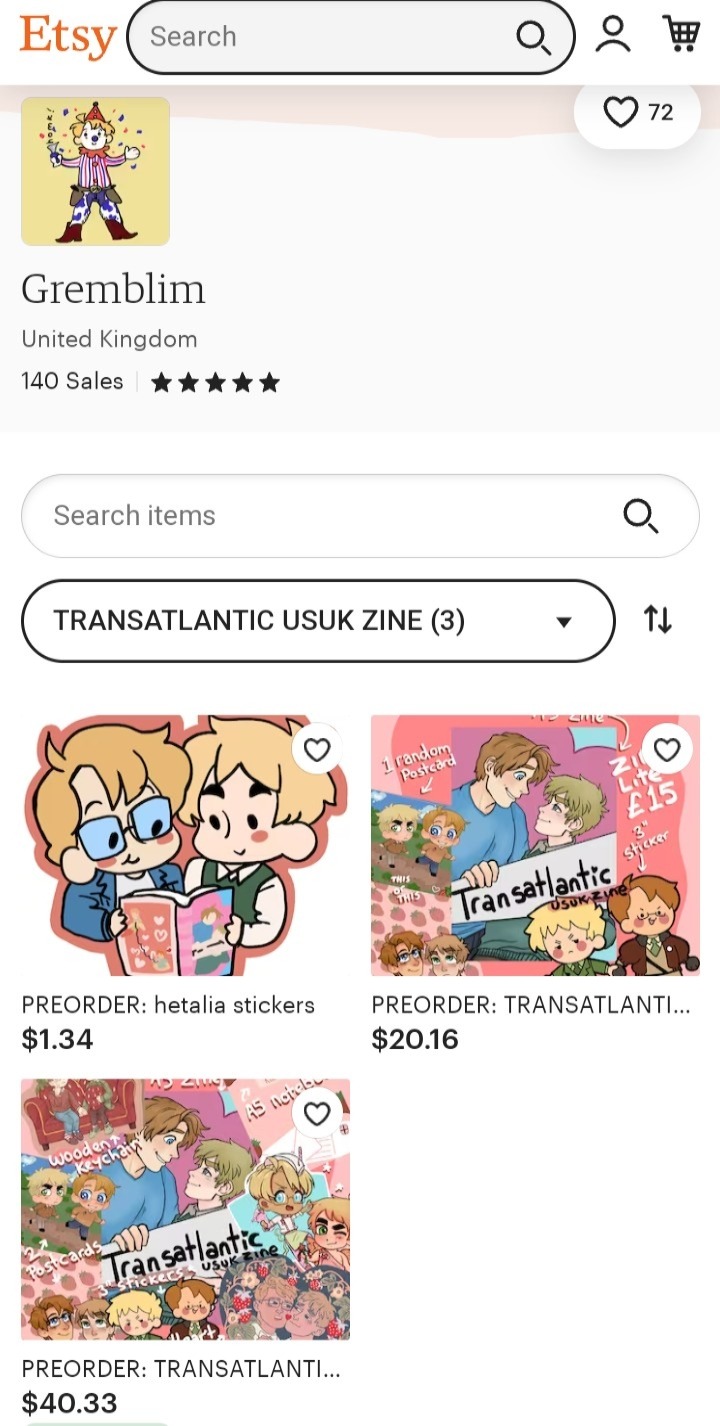
UK PREORDERS for TRANSATLANTIC are now live! (US will be released soon).
All profits will be donated to the Tussel Trust, a UK-based charity that combats hunger and poverty! You can read more about them through this link!
I have done a page for this zine, which I'll be teasing later today!
Special thanks to Gremblim and CloudSkully for organizing this project! It's been an honor working with everyone, and super fun!
If you see this posted twice, no you didn't (My internet died sending the first post now Tumblr will decide when to post that one).
#usuk#beiei#libertea#hetalia#aph#hws#aph england#hws england#arthur kirkland#aph america#hws america#alfred f jones#transatlantic#zine preorder#tussel trust
21 notes
·
View notes
Text

some strawberry boys that were made into stickers for the transatlantic zine
🍓🍓🍓
#shit i drew#hetalia#hws america#hws england#usuk#ukus#im sorry i havent drawn in so long n yall r getting the backlogs the holiday season has Kicked My Ass
83 notes
·
View notes
Text
Why Diplomacy Is The Worst And We Shouldn't Even Try It Probably
The Antarctic Empire is pursuing diplomacy on SMPEarth (why not try something new to provision the empire), but the Transatlantic organization they're negotiating with keep acting stranger and stranger to Phil, going from oblique comments to straight up rudeness. Technoblade has to pick apart this social tangle and figure out why they keep being so weird to his co-emperor, hopefully without endangering the empire as he does it. He is not psyched about this challenge, and the fact that Phil just keeps getting more and more stressed and silent isn't helping.
Or: Conference Meetings, Lobster, and some Hugs in the middle of the North Atlantic.
Status: 1/1 chapters, updated 7 November, 5,746 words
Fandom: SMPEarth
Characters: Technoblade, Philza
Tags: Antarctic Empire Faction on SMPEarth (Video Blogging RPF), Writing About Food Again, Friendship, Hurt/Comfort, references to past torture, Zine: Technojoy Zine, Hugs, Canon-typical levels of arial bombardment, Happy Ending, Emduo, Alternate Universe - Modern with Magic
I had the privilege of writing something for @technojoy-zine! Some SMPEarth Antarctic Empire for you, with airships and a digression into lobster, like you do.
91 notes
·
View notes
Text
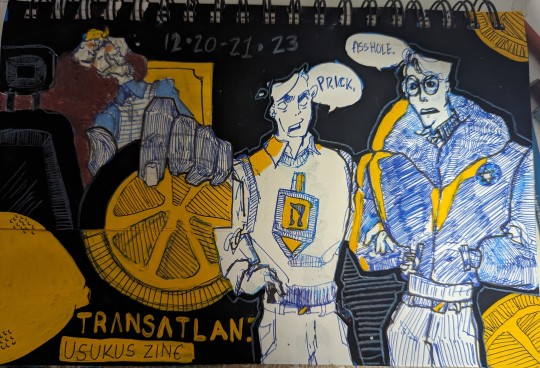
Thank you @gremblim and @skullycloud for organizing the USUK Transatlantic Zine!!! It arrived yesterday and all the little goodies that came with it are SO cute
Heres a sketchbook redraw of one of gremlins pieces! Happy holidays!
55 notes
·
View notes
Note
Hiiiii I saw your art in the transatlantic zine and it BLEW ME AWAY I’m absolutely in love !!! I just HAD to saw something 🫣

Aasjjfdjdjs thank you 💞💞 it feels like ages since I’ve drawn usuk but that zine was so fun to participate in! I haven’t seen it in person yet but I’m so excited UWAAHHH
#ask#thank u anon 💖#I put my whole pussy into that piece for no reason…#I don’t know when I’m allowed to post it tho
4 notes
·
View notes
Text
Farewell to Beyond the Beyond
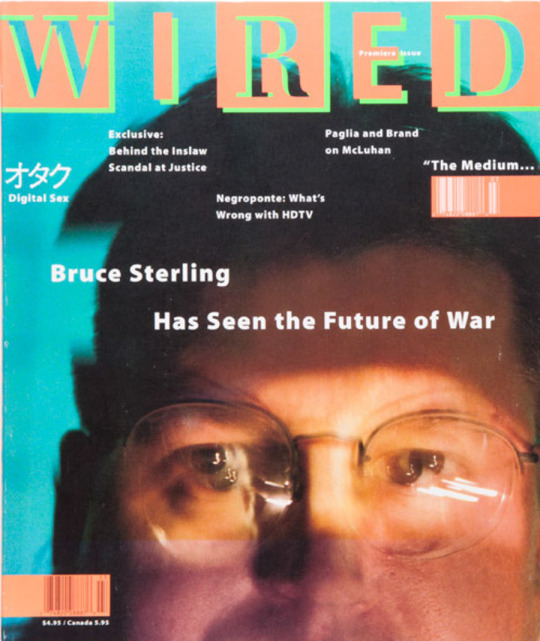
In 2003, Eileen Gunn's pioneering online sf magazine shut down, and so did @bruces' early seminal blog, the Schism Matrix.
http://www.infinitematrix.net/columns/sterling/
But thankfully, that wasn't the end of Bruce Sterling's blogging career: Wired gave him an (unpaid) online home for a new blog, every bit as cranky, esoteric, gnomic and darkly comic as Bruce himself: Beyond the Beyond.
https://www.wired.com/category/beyond_the_beyond/
Now, Beyond the Beyond is done. Wired publisher Conde Nast is in such deep financial trouble that they're realizing minuscule savings like those to be gleaned from shutting down an unpaid blog.
Sterling's written a fantastic farewell post.
https://www.wired.com/beyond-the-beyond/2020/05/farewell-beyond-beyond/
Sterling has a long history with Wired and an even longer one publishing hugely influential (and paradoxically obscure) esoteric projects, most notably CHEAP TRUTH, the 300-circulation xeroxed free cyberpunk zine that set the direction for the whole field.
Here's the full run as ebooks (donationware in support of the Transatlantic Fan Fund):
https://taff.org.uk/ebooks.php?x=CheapTruth
Here's some gloriously grainy scans:
https://fanac.org/fanzines/Cheap_Truth/
Then there's Sterling's long association with Wired: he was on the cover of the first issue (!) and had a column for several years. Fun fact: I dropped out of university after reading that issue and got a job as a multimedia programmer.
Sterling's run on Beyond the Beyond was wide-ranging, prescient, cranky and fascinating. As he notes, BtB was the cradle of both "design fiction" and augmented reality.
But BtB's real purpose was as a novelist's "commonplace book" - a kind of mood board for writing. This is exactly what my own blogging has been: a way for me to make notes to myself, but for an audience, which demands a rigor that personal writing lacks.
Unlike me, though, Sterling keeps extensive paper notebooks and (jfc) destroys them: "You don’t have creative power over words unless you can delete them."
This is so right on: "The writerly act of organizing and assembling inchoate thought seems to helps me. If I blogged something then I had tightened it, I had brightened it. I had summarized it in some medium outside my own head."
"Posting on the blog was a form of psychic relief, a stream of consciousness that had moved from my eyes to my fingertips; by blogging, I removed things from the fog of vague interest and I oriented them toward possible creative use."
Preach, brother.
And also: "Often, it’s the determined act of writing it down that allows one to realize the true sterility of a silly idea; that’s how the failure gets registered in memory; 'oh yes, I tried that, there’s nothing there.'"
Sterling's epitaph is such a good eulogy/summary of tech era: "People often paid me to write, and to speak, too, but the pay was never commensurate with the impact of the work. What people cheerfully paid for, and what they actually cared about, were different things."
"I came to understand that creative work that pleased the markets did not much affect people personally."
"Also, critical recommendations are powerful: 'If you think you like this thing, then you should look at that other, better thing, because that’s the real deal!' Nobody ever paid me for this countercultural guru activity, but man, that action really messed with people."
That's so good, and so right. There's no pleasure - and no power - more satisfying than shining light on things you love and awakening others to them.
Now, some vintage Sterling Nuggets:
"'Real artists ship,' and yes, they do have to ship something, or else they’re not artists. But they don’t have to ship everything they know. That’s because they’re artists, and they’re not a shipping service."
"I knew from the beginning that my weblog would surely cease some day, and I frequently warned readers that 'blogs,' the 'internet,' desktop computers, browser software and so forth, were all passing phenomena."
"If I was a young person, and starting over today, I would not experiment with a weblog supported by a West Coast US technology magazine. Instead, I would try something more youthful in spirit, less conventional, more beyond-the-beyond."
Godspeed, Chairman Bruce.
20 notes
·
View notes
Text
“Enough is never enough.”
Larry Cohen was the inspiration for our first zine, and the only filmmaker who we’ve devoted an entire issue to. He gave up his time for a lengthy transatlantic phone call from a fan with minimal credentials, and was funny, forthcoming and patient with some extremely geeky questions. He answered all of them before he had to sign off, but we could’ve picked his brains for hours more, on Black Caesar, God Told Me To, It’s Alive, Q, The Stuff and Wicked Stepmother.
And we could’ve written so much more – on the still unsung The Private Files of J Edgar Hoover, Special Effects, The Ambulance, the much-too-easily overlooked sequels A Return to Salem’s Lot and It’s Alive III: Island of the Alive – because, thankfully, his filmography – especially as a writer (and so many unproduced scripts!) – has so much more great stuff to discover.
youtube
Larry wrote like a demon, could finish a script almost as quickly as it took him to dictate it, but he had a 700-page autobiography on the shelf, “Because I think that there’s more to write, there’s more to tell. So, I haven’t finished yet.” It was hard to believe he ever would, but if it’s anything like his films, it’ll be one hell of a book.
RIP, maestro.
Larry Cohen RIP "Enough is never enough." Larry Cohen was the inspiration for our first zine, and the only filmmaker who we've devoted an entire issue to.
2 notes
·
View notes
Text

Very exciting news! Out now is "Do The Dog Ska-A-Go-Go", a transatlantic ska benefit compilation for Do The Dog Skazine! The comp features 20 awesome UK & US bands who have all contributed tracks to help support the continuation & expansion of Do The Dog Skazine. Grab your copy of the comp for just £5 & help support the zine that supports the scene here: http://dothedogmusic.bandcamp.com/album/do-the-dog-ska-a-go-go "Do The Dog Ska-A-Go-Go" includes tracks by: Doped Up Dollies, Ed Rome, The Pomps, The Freecoasters, Peg & The Rejected, Chris Murray Combo, Big D & The Kids Table, The Indecision, The Bakesys, Matt Wixson, Cartoon Violence, The Void Union, The Toasters, Tree House Fire, Bruce Lee Band, The Skapones, The Abruptors, The Chalk Outlines, Boomtown United & The Downsetters!
3 notes
·
View notes
Text
WRITE LEFT - contextualizing the LA in slavery
In May 2017, I published a zine called ‘write left: selections and reflections from the author’s late night #WikipediaWanderings.’ It contains 3 essays inspired by my amateur research into the history of southern California. Here is the first piece.
Recently, my partner was given the opportunity to spend some time in the South. Neither of us were familiar with the area, and we didn’t know what he should expect. We’d heard a tale of two regions. The first view was defined by one of its namesakes - Southern hospitality, where people on the street give you a friendly hello, strangers welcomed you into their home with open arms and a pitcher of sweet tea, a genteel demeanor in strong contrast to the fast-paced city nature of “the North”.
We were quicker to think of the South in the other light, one brought about from its history as the American epicenter of enslavement, debasement and cruelty that is the chattel slave system of Africans/ African-Americans in the 18th and 19th centuries. Where people still proudly flew Confederate flags as if oblivious to the pain and turmoil of black life that that symbol represented. We could tell that the foundations of racism and hatred ran deep, and my partner (white but woke) wondered about walking amongst them.
Of course, we were judging from afar, as we lived in California, the biggest blue state in the nation. Racism was, is and continues to oppressively dictate the lives of people of color in our great state; for a small sampling see pernicious ICE raids & LAPD targeting of black and brown bodies. But the South! Didn’t the systematic barbarity of the transatlantic slave trade take evil to a whole ‘nother level?
As if I could point the finger away from the land I live.
I recall vividly when my 5th grade teacher told our class that America (which I’d only ever been taught to see as the best most freedomest nation ever) was responsible and must account for 2 great evils in its history: how we treated Africans/ African-Americans and the indigenous people of this land**. I don’t mean to minimize the destruction of life methodically achieved through the Southern slavery system, but why am I so quick to bring up one evil, and not that which has been wrought upon the first peoples of this nation?
As an Angelena, I too live in a land that has enslaved members of another race and assumed their inferiority. That this has been perpetrated by the 3 powers that claimed their rule over this land - Spain, Mexico, and finally the U.S. - does not lessen our culpability in owning up to this past.
It was under Spanish rule that in 1799 Padre Antonio de la Concepcion Horra reported, “The treatment shown to the Indians is the most cruel I have ever read in history. For the slightest things, they receive heavy flogging, are shackeled and put in the stocks, and treated with so much cruelty that they are kept whole days without water.” In elementary school in California, children learn about the Spanish missions, making their own replica and going on a field trip to visit the historical site. What is often missing from the lesson is how they were built with Indian labor, with the express purpose of converting Native Americans to Catholicism, after which the native people of the land were forced to live within the settlements and work for the Spanish. Runaways and rebels were punished harshly, but throughout this period, Native Americans resisted their colonizers through uprisings and other attempts to achieve their freedom from bondage.
It was under Mexican rule that the missions and other large land estates were awarded to wealthy ranchos, who counted on the native population as their labor force. Native Americans had no choice but to enter this pact; if they did not, their villages would be raided and their labor would be taken by force anyway. Going further, in 1846, Mexico’s Assembly passed resolutions calling for funding to locate and demolish Indian villages.
It was under American rule where in 1850 state legislators legalized white custody of Indian minors and prisoner leasing. Ten years later, they legalized the “indenture” of “any Indian,” which triggered an increase in violent kidnappings of Indian people. As one lawyer at the time put it “Los Angeles had its slave mart [and] thousands of honest, useful people were absolutely destroyed in this way.”
And during this whole time, the Native American population fell at an incredible rate, further decimated by the onslaught of European diseases. This point is important, because sadly, one of the main reasons our public education fails to acknowledge our genocide of Native Americans is because America has so totally accomplished its goal of annihilation of indigenous people.
Or as comedian Solomon Georgio puts it:
“The Native Americans as a people have suffered the worse genocide in human history. Some may say, hey Solomon what about the Holocaust? And I wouldn’t take that away from anyone, the Holocaust was a terrible, terrible tragedy. However…I have seen 10 or more Jewish people in the same room. I haven’t seen 10 Native Americans…in my life. They used to live right here.”
In Mexico, self-identified indigenous people make up 21.5% of the population. In Canada, it’s 4.2%. In USA, the indigenous population is only 1.4% of the general population. The USA has been the most systematically cutthroat in ending the lives of its native peoples, and as a result, it is possible in today’s world to not be visibly reminded of their presence.
But it is our duty to empathize, feel into their struggle, and most importantly act in solidarity with these communities. Here is an incomplete list of concrete steps we can take today, most local to the Los Angeles area:
- We can support indigenous-led movements such as the movement against the Dakota Access Pipeline and divestment efforts from banks that support the destruction of Native American land.
In June 2017, LA City Council, pressured by the indigenous-led Divest L.A. movement, voted unanimously to divest over $40 million in investments from Wells Fargo.
- We can pressure LA City Council to follow the example of other cities and turn Columbus Day into Indigenous Peoples Day, as well as formally recognize the genocide of the Native American people.
In August 2017, LA did just that, replacing Columbus Day with Indigenous Peoples Day.
- We can join the new petition to decolonize our children’s education when it comes to learning about the Spanish missions, recentering the narrative to focus on “the impact and daily life of the native population within these missions.”
The 2nd CA Indian Curriculum Summit happened at Sacramento State on October 2017, with the purpose to “provide 3rd and 4th grade teachers with California Indian vetted replacement units that address Common Core Standards.”
- We can use our money to support Native American stories, media and art, such as film festivals like LA Skins Fest.
The next LA Skins Fest happens annually in November at TCL Chinese Theater in Hollywood. Find out more at www.laskinsfest.com.
As expected, my partner survived the South. What he saw was appalling - “Drunk Lives Matter” on a T-shirt, a man trying to start a fight as my partner booed a parade’s Confederate flag. But peeking into that world through him, made me think about mine. We can’t even get it right in CA, a state that prides itself on its “progressive values”. For the indigenous people of this land, and for us, the descendants of settlers, who are committed to living by our values and fighting for the liberation of all peoples, it’s time to act. Let’s start locally, in the place that we’re in, with the hope that everyone else is thinking the same.
**Shoutout to Mr. Sig for keeping it real! Although - only 2 evils? The Chinese laborers of the nineteenth century, Japanese families forced into internment camps during WW2, Latino youth of the ‘Zoot Suit Riots’ and many other marginalized groups beg to differ…
References
“Demographics of Canada.” Wikipedia
“Demographics of Mexico.” Wikipedia
“Demographics of the United States.” Wikipedia
“A History of American Indians in California.” Five Views: An Ethnic Historic Site Survey for California. National Park Service. November 17, 2004
“History of Enslavement of Indigenous Peoples in California.” Wikipedia
“History of Los Angeles.” Wikipedia
Madley, Benjamin. “It’s time to acknowledge the genocide of California’s Indians.” Los Angeles Times. May 22, 2016
“Repeal, Replace and Reframe the 4th Grade Mission Project.” California Indian
Curriculum. Sacramento State.
“Solomon Georgio Stand-Up 02/10/15 - Conan on TBS”
1 note
·
View note
Text






Preorders for our usuk zine are open! 26 artists, 76 Pages, 35 full colour illustrations! america and england enjoyers here you go
#hetalia#usuk#aph america#aph england#hetalia fanart#arthur kirkland#ZINE#TRANSATLANTIC ZINE#FANZINE#HETALIA FANDOM
59 notes
·
View notes
Text
Notebook 3
Notebook 3
1. With the transnational movement of African musical instruments such as the marimba, this suggests the transnational movement of African music as well. This genre of music is evident through the very first spiritual slave songs such as, “Swing Low, Sweet Chariot,” from Notebook 1. These spiritual slave songs were sung to help pass time and were also sung as a form of hope for a better life. Many of these slave songs resurge at a time of difficulty for African Americans such as slavery, the Civil Rights Movement, and present-day’s Black Lives Matter Movement.
Below is the original spiritual song sung by The Plantation Singers:
youtube
Below is a jazz remake by Dizzy Gillespie during the during peak of the Civil Rights Movement:
youtube
Below is a Black Lives Matter Protestor singing the song during a protest:
youtube
2. Relational Analysis
When we hear the word “slaves” most of us automatically assume an African American slave. That is exactly how this group’s racial formation originated—through the transatlantic slave trade. These people were initially deemed as an object due to the color of their skin and nobody wanted to be “black.” As discussed in Christina Sharpe’s “In the Wake,” there is a form of anti-blackness that has carried on throughout history. The Irish were considered indentured servants, but in today’s society, they are considered part of the “white” category. Although African Americans were freed on paper after Abraham Lincoln’s Emancipation Proclamation, people found loopholes to limit the rights and quality of life of this group such as the Jim Crow Laws and today’s “New Jim Crow” referring to the nation’s prison system and War on Drugs. If we ask ourselves, “What does it mean to be black?” a lot of us would answer, “your skin is black.” However, that is not the case. The term “black” is a very loaded word, meaning that it carries a lot of deep meaning that is not just meaning the color of one’s skin. To be black means to be associated with slavery, to be automatically prejudiced against, and to be not white. Whether we like it or not, that is what majority of people think about when they think black. African Americans have struggled with rights and politics throughout history such as the Civil Rights Movement and today’s Black Lives Matter whereas after the potato famine in Ireland, the Irish indentured servants were only considered servants only for a short while but now they have assimilated under the “white” category because of the color of their skin.
Cover of Zine:
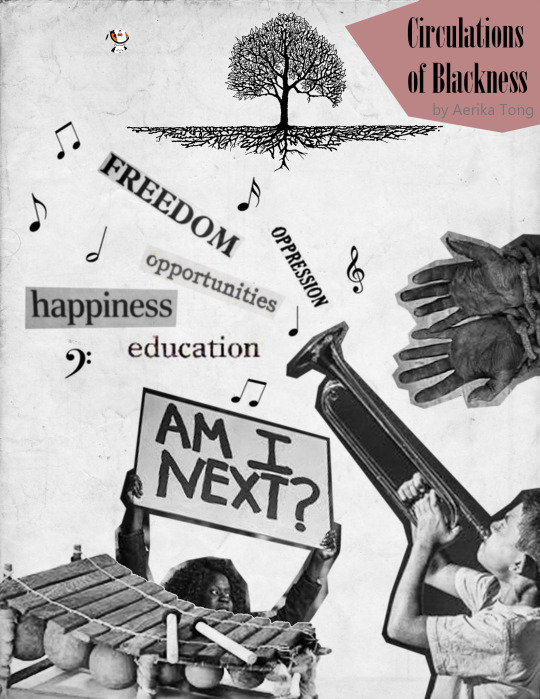
Page of Zine:

5 notes
·
View notes
Photo
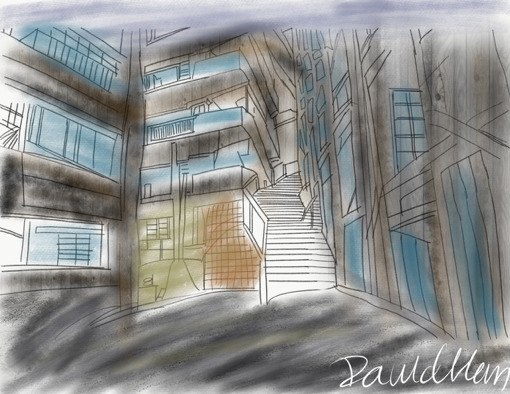

Sang (David) Han
A. Summarize the Zine
This zine discusses Hashima Island, also known as Gunkanjima or Battleship Island, an abandoned island off the coast of Japan. This small island was a forefront leader in Japan’s industrialization however, most people do not know about its tainted past. Controlled by the company Mitsubishi at the time, the island was a site for forced labor and sex workers. The intended audience would be those interested in Japanese and Korean relations, other examples of colonization, sex workers, forced labor, or UNESCO World Heritage Sites controversies.
B. Compelling Quotes
Quote 1: “[The island] represented Japan’s future” (– Video Quote)
I would use this quote as the caption for your drawing posted on Feb. 8th. I think the image and quote work well together to illustrate the island’s role in industrialization of Japan.
Quote 2: “Hashima Island is the symbol of conglomeration of forced laborers and sex slaves.”
This quote itself is very powerful and should be placed in your zine as the title of one of your pages, specifically the one discussing the object’s national binds. The text should be presented in big, black, bold letters, in order to draw attention to it.
C. Compelling anecdotes, stories, facts and content. Pick 1 or 2 examples of content that you found particularly powerful and relevant, and that you suggest your classmate should include in their final zine. Repost the content. Give suggestions on how the content could be laid out.
Content 1: “The vast majority of sex slaves and involuntary servitude was drawn from Korean because it was a colonial country. Koreans were subject to the Japanese military authorities because of their prejudice against their colonial subjects. The Japanese government considered the Korean people mainly as instruments to be expended for its war purpose.”
Context 2: “Just like how European countries stripped any with resources and established outposts in African continent to expedite the shipping of the slaves, under the Japanese occupation, industrialization was only for the purposes of benefiting Japan. The exploitation of the Korean people in their own country, the environmental exploitation of the peninsula, and its long-term negatives of repercussions is still left for its controversy.”
The content above should be laid out so as to illustrate to your audience the influence Japan’s power had in its relationship with Korea but also how the industrialization and growth of Japan led to the subjugation of Korean people, environmental exploitation, and long-term negative consequences. It should be the focus of your zine therefore it should be placed after your introduction of the island but before the UNESCO controversy.
D. Compelling Images
If the second image violates copyright, try to recreate an image that focuses on what the island may have looked like during its peak so that the first image and second image can serve as a before and after.
The before image should be placed in the introduction of the island and the second image should be placed during the national binds discussion.
E. Reword Analysis
i. Hashima’s history can be related back to the Transatlantic Slave Trade when black individuals were forced to migrate from Africa to other countries around the world. These individuals were displaced in order for the commodification of their bodies, which was similar to the slaves on Hashima island. These slaves, both labor and sex workers, performed involuntary servitude that benefitted their colonizers. During present times, the colonization of Korean individuals has had long-term effects on Korean society.
ii. This analysis is powerful because most people tend to only recognize European settlers as colonizers but Hashima’s history reveals this as a misconception. The direct comparison of histories illustrates the influence of colonizers on countries that may be susceptible to higher powers. This helps the readers understand the severity of this issue and why it is important for the history of Hashima to be known.
iii. I would put more of an emphasis on why the island is abandoned now and how this affected Koreans and Japanese individuals. I would also talk more about the island’s circumstances and how that may have affected the livelihood of those living there. Emphasize that the island was chosen because it had coal resources.
1 note
·
View note
Text


what do u think theyre lookin at? 🤔
just the sneakiest lil peak at my entry into the Transatlantic: USUK Zine 💃
there's 26 artists of all sorts, 35 full illustrations that are a part of 70 art pages, and 76 pages total, plus some other bonus goodies, all for $20 ✨
u can also get the strawberry or lemon tier version for all kinds of goodies n bits more for $15 more 🍋🍓
all proceeds go to The Trussell Trust, a organization dedicated to fighting hunger in the UK 🙏
u can grab this behemoth of a zine using the link below. UK preorders are ending on sunday this week, but US preorders close next week. they will ship out mid-november 👨❤️💋👨
🍋 👇👇👇👇👇👇👇👇👇👇 🍓
36 notes
·
View notes
Text
UK store/strawberry tier preorders close this sunday!

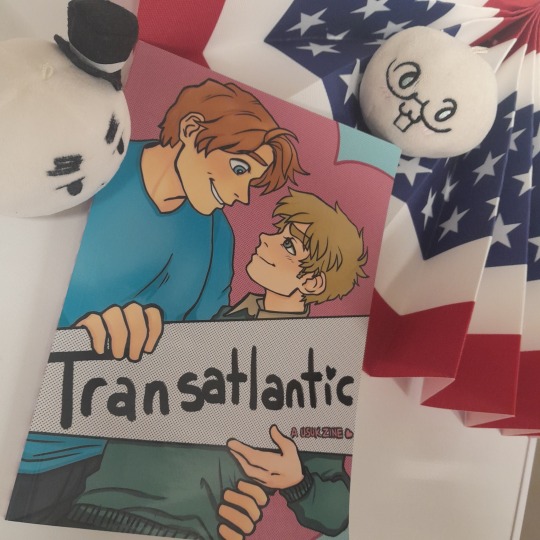
🍓 The mochis have decided to better themselves with literature 📖 Zine preorders: 🍓 UK store closes sunday! Last chance for strawberry merch, #hetalia fanzine shipping internationally 📦
All profits will go to tbe Trussell Trust, a UK charity fighting hunger! Treat yourself to a hefty art book and support a good cause!
https://linktr.ee/usukzine
#Hetalia#Hetalia merch#Hetalia fanzine#Hetalia fandom#Hws merch#Hws america#Usuk#transatlantic zine#Hws england#arthur kirkland#Aph america
18 notes
·
View notes
Note
are you planning to open EU orders too for the zine? I'd love to get one
hey! Thanks for taking an interest in the zine!
And yeah! The store that ships from the UK is currently open here and offers tracked international shipping around the world including to the EU!
Currently the zine is on preorder which will close in the first week of september and then we'll order in all of the components and start shipping out!
(We will also be opening a US based store too very soon, for the yanks! Hopefully having two bases for the shipping will be more accessible )

#Asks#Transatlantic zine#Usuk#Hetalia zine#Im so excited for everyone to see how thick this zine is theres so much ART
13 notes
·
View notes